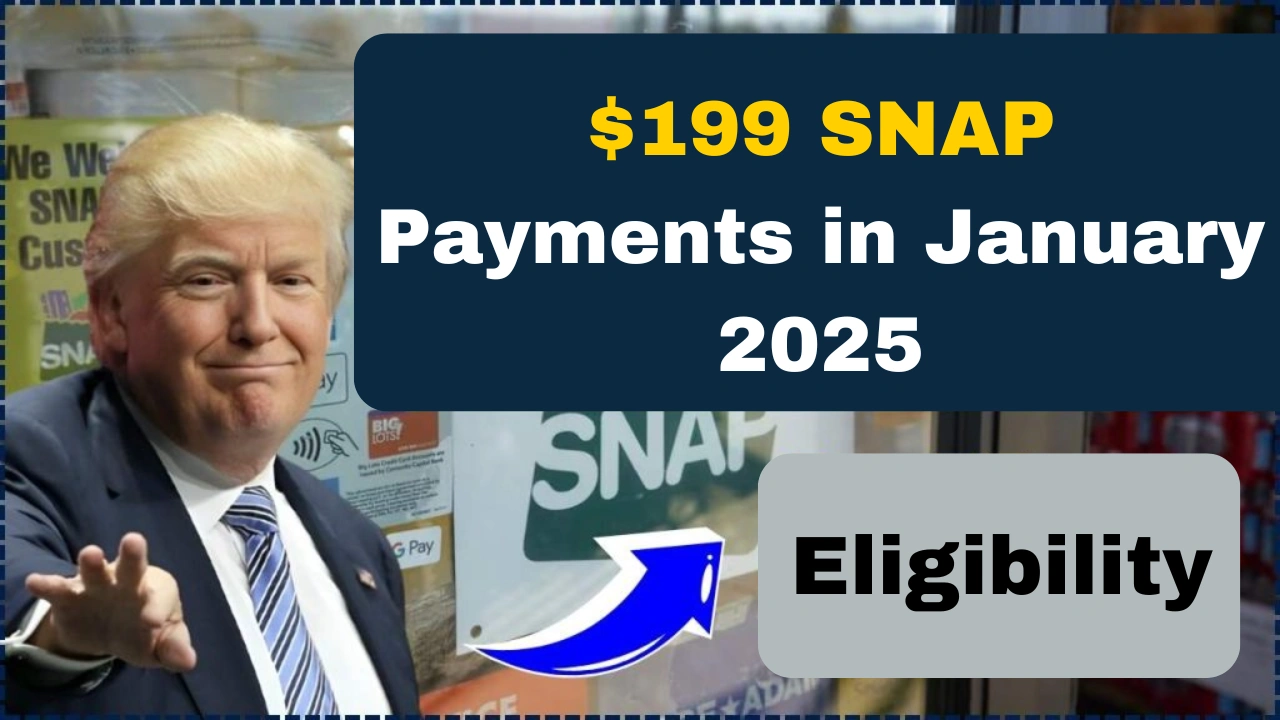The Supplemental Nutrition Assistance Program (SNAP) provides critical financial support to individuals and families struggling to afford food. In January 2025, eligible households can receive an average of $199 in SNAP benefits. This guide will walk you through the eligibility criteria, how to apply, key dates, and answers to frequently asked questions, helping you take full advantage of this essential program.
What Is SNAP, and Why Is It Important?
SNAP, the U.S. government’s largest program for fighting hunger, helps low-income households purchase nutritious food. Known previously as food stamps, the program is federally funded but administered at the state level, meaning the application process may differ slightly by state. The program not only supports healthy eating but also plays a vital role in alleviating poverty, stimulating the economy, and reducing food insecurity.
Why SNAP Matters:
- Supports Healthier Diets: SNAP helps millions of Americans afford essential foods like fruits, vegetables, and whole grains, contributing to better health outcomes.
- Poverty Relief: By providing essential food support, SNAP helps struggling households manage financial hardship.
- Economic Stimulus: Every dollar spent on SNAP generates $1.50 in local economic activity, benefiting businesses and communities.
- Combats Hunger: The program helps ensure that vulnerable populations, such as children and the elderly, have access to food.
Who Is Eligible for $199 SNAP Payments?
Eligibility for SNAP is determined by household size, income, and resources. Here’s what you need to know:
- Income Limits: Your gross monthly income must not exceed 130% of the federal poverty level (FPL). For instance, a family of three must earn no more than $2,984 per month. After allowable deductions (like housing costs and childcare), your net income should also meet the program’s requirements.
- Resource Limits: Most households must have resources under $2,750. However, if you have a member aged 60 or older, or a disabled individual in the home, the resource limit rises to $4,250.
- Citizenship/Residency: You must be a U.S. citizen or meet specific immigration criteria.
- Work Requirements: Able-bodied adults (ages 18-49) without dependents are required to work at least 20 hours a week or participate in a work program. There are exceptions for those with disabilities or other special circumstances.
How to Apply for $199 SNAP Payments
Applying for SNAP benefits is straightforward, and you can do it online, by mail, or in person. Follow these steps to apply:
- Prepare Documentation:
- Proof of income (e.g., pay stubs or tax returns)
- Identification (e.g., driver’s license or Social Security card)
- Proof of expenses (e.g., rent, utility bills, childcare costs)
- Immigration documents (if applicable)
- Find Your State’s SNAP Office: Visit your state’s official SNAP website to locate the contact information for your local office.
- Submit Your Application:
- Online: Most states offer online applications through their websites.
- In Person: You can apply by visiting your local SNAP office.
- Mail or Fax: Download and complete the application form, then mail or fax it to your state office.
- Interview Process: After submitting your application, you’ll likely need to undergo a phone or in-person interview to verify your details and provide any additional documentation if requested.
- Receive Your Benefits: Once approved, you’ll receive an Electronic Benefit Transfer (EBT) card, which works like a debit card. Use it at authorized retailers to buy eligible food items. The amount of benefits and payment schedules vary by state, so check with your local office for details.
What Can You Buy with SNAP Benefits?
SNAP benefits can be used to purchase a variety of healthy food items, including:
- Fruits and vegetables (fresh, frozen, and canned)
- Meat, poultry, and fish (fresh, frozen, and canned)
- Dairy products (milk, cheese, yogurt)
- Bread and cereals (including whole grains)
- Seeds and plants (for growing your own food)
However, there are restrictions on what you can buy. SNAP benefits cannot be used for:
- Alcohol or tobacco products
- Non-food items like cleaning supplies, toiletries, or pet food
- Vitamins, medicines, or supplements
- Hot foods or ready-to-eat meals (e.g., from restaurants)
Key Dates for January 2025 SNAP Payments
SNAP payment dates vary by state. Most states distribute benefits at the beginning of the month, while others may spread out payments throughout the month. To know when your benefits will be available, refer to your state’s specific schedule.



